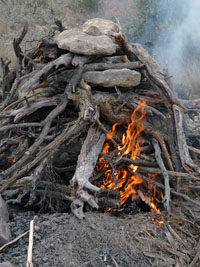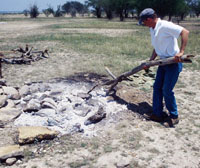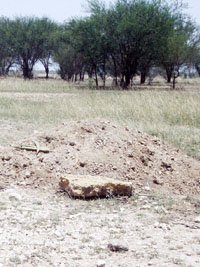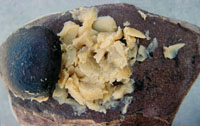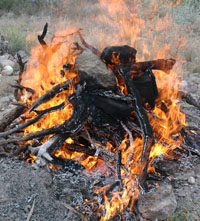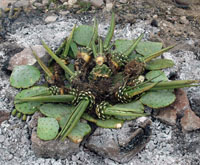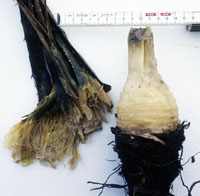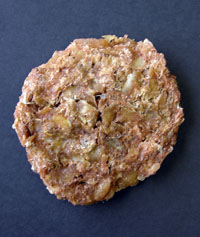Lechuguilla as a Food
As a food source, lechuguilla was sought out for the carbohydrates contained in the central stem and attached lower leaf bases, sometimes referred to collectively as the heart. The heart of the plant is rich in carbohydrates, but these are very complex, long-chain sugars that must be broken down by prolonged heating (baking) before they are edible. The baking is also needed to break down the toxic sap. Native peoples baked lechuguilla in earth-covered cooking pits known as earth ovens.
Although lechuguilla can be harvested and baked any time of the year, the maximum amount of sugars are present during wet periods just prior to the time a mature plant sends up its flower stalk. The sugars are, in effect, stored energy that the plant draws on to flower. During droughts the plant is stressed and contains little sugar relative to toxic compounds and fiber. After sending up its flower stalk, the plant’s energy is spent and it usually dies. Because it can take up to 30 years for a plant to mature, lechuguilla stands can be easily over harvested, especially if smaller, less ideal plants are removed out of desperation or for non-food use. Heavily harvested stands may take several decades to recover.
To harvest the plant, a strong hardwood digging stick or modern equivalent must be used to pry up the tenacious plant or sever the central stem from the roots. Given its preferred rocky habitat, this requires expertise or lots of persistence. Once the plant is removed from the ground, the leaves are trimmed off close to the central stalk with a sharp stone or metal knife. Only the leaf bases (the part that attach to the stem) are potentially edible. Once cooked, the trimmed leaves are eaten somewhat like an artichoke leaf, albeit a very tough, chewy artichoke leaf.
Once trimmed lechuguilla stalks are amassed, they are cooked in a 5-step process in an earth oven.
1) Prepare abroad, shallow pit with sloping walls (about 20-24 inches deep by 5 to 7 feet wide). Loosely stack approximately 450 pounds of wood (branches) and place 515 pounds of large rock into the wood. (See Oven Sequence 1 and 2)
2) Let it burn until only hot coals are left. By now the heat has been transferred from the burning wood to the rocks, which act as a heating element. (Oven Sequence 3)
3) The exposed rocks are VERY HOT, about 700-900 ° F, and VERY DANGEROUS. Place the green packing material, consisting of prickly pear pads, on the hot rock heating element; this has to be done QUICKLY, or the prickly pear pads will burst into flame. The prickly pear pads contain lots of water and oxalic acid. When heated, the pads provide steam and a mild acid that helps to break down the toxins in the lechuguilla plants. Put the trimmed lechuguilla on the packing material (Oven Sequence 4)
4) Cover the food with prickly pear pads, leaves or a mat, then cover everything with a thick layer of dirt, making certain that the oven is completely sealed. (Oven Sequence 5)
5) Open the oven after waiting 48 hours, remove the cooked lechuguilla, (which now smells like molasses), chew wads of leaf bases, pound the stems into pulp and shape into flat cakes. Dry the cakes in the sun. (Oven Sequence 6-8).
